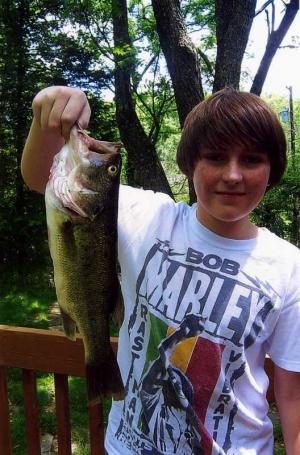Clearing up confusing statistics about Delaware’s waterways
I first became aware of some information on the health of Delaware waterways while reading a press release from the Inland Bays Foundation. According to the release, 94 percent of Delaware’s rivers and streams are so polluted that fish can’t thrive, and 85 percent are unhealthy for swimming.
I found this very shocking, especially since I fish Delaware’s rivers and streams every year and have done so since I was a child. While a good many rivers and streams may have been in poor shape a long time ago, it certainly isn’t true today.
The first thing I did was contact the Inland Bays Foundation to find out exactly where they found this information. Their spokesman told me the numbers came from Delaware’s Department of Natural Resources and Environmental Control. My next email went to Michael Globetti in the Office of the Secretary of DNREC who put me in contact with John Clark, supervisor of fisheries in the Fish and Wildlife Division. John was kind enough to explain how this information came to be.
He said the DNREC web page states, “Most of Delaware’s waters do not meet water quality standards for their designated uses - drinking, swimming and supporting fish and other aquatic life. The state’s list of impaired waters include 377 bodies of water that suffer from excess nutrients (nitrogen and phosphorus), low dissolved oxygen, toxics and bacteria. Extensive analysis of chemical contaminates in fish has led to advisories that fish are unsafe to eat in more than 30 waterways statewide.”
John said, “This wording is unfortunate, as it can be interpreted as implying that by not meeting water quality standards, these waters do not support fish communities. You and I both know that is not true.” Yes, we do.
It seems fish are a lot more adaptive than some people think. My friend Taylor Deemer, a student at the University of Delaware, is doing a study on weakfish and how they react to low dissolved oxygen. His findings so far indicate the weakfish will move up and down in a waterway to stay in water where the oxygen level is to their liking. Even if they encounter very low oxygen levels, they simply slow down their metabolism until the level goes up again.
As an example of how this works, John said the dissolved oxygen in Indian River will be almost zero at dawn then go to a supersaturated level of 20 ppm by mid-afternoon in July and August. While this may slow the growth rate a bit, the reason for the wide shift in dissolved oxygen is the large amount of phytoplankton blooms. The phytoplankton blooms produce large numbers of zooplankton that provide abundant food for the young fish. So even when the levels of these nutrients are above the EPA standards, the fish still thrive.
As for our freshwater impoundments, I know for a fact that most, if not all, hold excellent populations of gamefish and forage. I live near Red Mill Pond, and even through it is privately owned and not managed by the state, there are plenty of bass, perch, crappie, carp, catfish and sunfish. On the other hand, swimming here is not a good idea due to high levels of bacteria.
On the other side of the state, the Nanticoke River and Broad Creek are two of the top tidewater bass fisheries in the country. I have fished here since I was a kid and even when the canning factory in Laurel was running full blast in the summer and dumping tons of tomato waste just below the spillway in Laurel I could still catch bass, perch and sunfish there.
Back during the same time period when I lived in Claymont, the Delaware River was so bad that nothing could live in the water between there and Trenton. It was covered in an oil sheen and all the sewage waste poured directly into the river. Today, striped bass spawn in these waters.
While great progress has been made in cleaning up the water in Delaware, much remains to be done. While no more oil and sewage find their way directly into the water, we are still plagued by nutrient runoff and sewage leaking from septic tanks. Both of these problems will require complicated solutions due to the politics involved.
Still, overstating the situation does no good and causes a great deal of harm. If someone unfamiliar with Delaware reads that 94 percent of the water holds no fish and even if you do catch one you can’t eat it, then in the next sentence they find out that 85 percent of the water is too dirty for swimming, that person is going to cross Delaware off their list of vacation locations in spite of the fact that we have great fishing and some of the cleanest ocean beaches in the country.
Eric Burnley is a Delaware native who has fished and hunted the state from an early age. Since 1978 he has written countless articles about hunting and fishing in Delaware and elsewhere along the Atlantic Coast. He was the founding editor of the Mid-Atlantic Fisherman magazine. He and his wife Barbara live near Milton, Delaware. Eric can be reached at Eburnle@aol.com.






















































